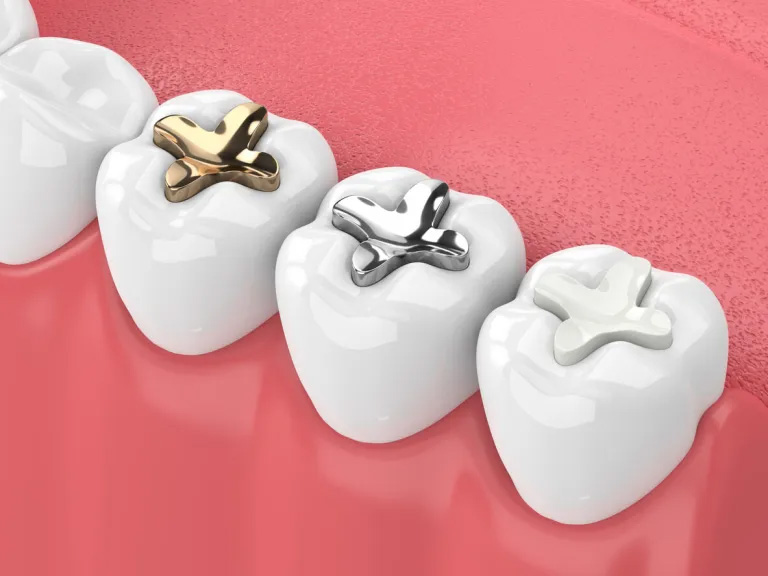Existing Patients
(770) 475-3600
New Patients
(770) 526-9210

A crown, sometimes referred to as a cap, is used to restore and enhance teeth that are heavily damaged. A tooth-shaped “cap” is placed over the base of a tooth to restore its shape, size, and strength. The crown fully covers the visible portion of the tooth above the gum line.
There are several options available for the material your crown is made of including porcelain, porcelain fused with metal, gold, and zirconia. Talk to your dentist to determine which is best for your treatment.
Placing a crown generally takes two office visits. Your first visit will be to prepare your tooth. After a thorough examination of the tooth to ensure if it can support a crown, the tooth will be filed down to make room for the crown to be placed over it. In severe decay or damage cases, the tooth may need to be filled in to provide the crown a stable base to be placed on (often known as a buildup), sometimes you will need to use posts in order to support the build-up and increase the strength and longevity of the crown. Once the tooth is prepped, an impression of the tooth and surrounding teeth will be taken. The impression will be sent to our lab where they will use the latest technology to craft your crown. Your dentist will place a temporary crown while you are waiting for your new one. This crown will be cemented with temporary cement, and we will give you special instructions to take care of it.
You will have your follow-up visit when your crown is ready. Your temporary crown will be removed and replaced with your new permanent crown. An X-ray is taken to confirm the fit of the corn and a specialized adhesive or cement is used to securely fasten the crown in place. Follow your regular oral hygiene routine to properly care for your new crown.
Fillings are commonly used to repair the function and shape of a tooth that has been damaged by decay or trauma. The damaged portion of the tooth will be precisely removed leaving as much healthy tooth remaining as possible. The resulting void in the tooth will then be cleaned out and filled. The filling will help stop further decay by sealing off any cracks or crevices where bacteria could enter. There are several filling materials available with their own set of pros and cons, we usually use composite base fillings or commonly known as “tooth color” materials for directive restorations. Indirect restorations, meaning those that are sent to a lab could be metal, porcelain, or zirconia. Dr. Austin will help you determine the best choice for you based on several factors.
The entire process of getting a filling will take about an hour. Depending on the filling material, your filling can last from 5-15 years. And just like the rest of your teeth, how long they last are directly impacted by your overall oral hygiene and home care. Make sure you are brushing and flossing every day and attending your regularly scheduled checkups with your dentist.
*Credit to Karina Morazzi Photography
Invisalign®, the Invisalign logo, and iTero®, among others, are trademarks and/ or service marks of Align Technology, Inc. or one of its subsidiaries or affiliated companies and may be registered in the U.S. and/or other countries.